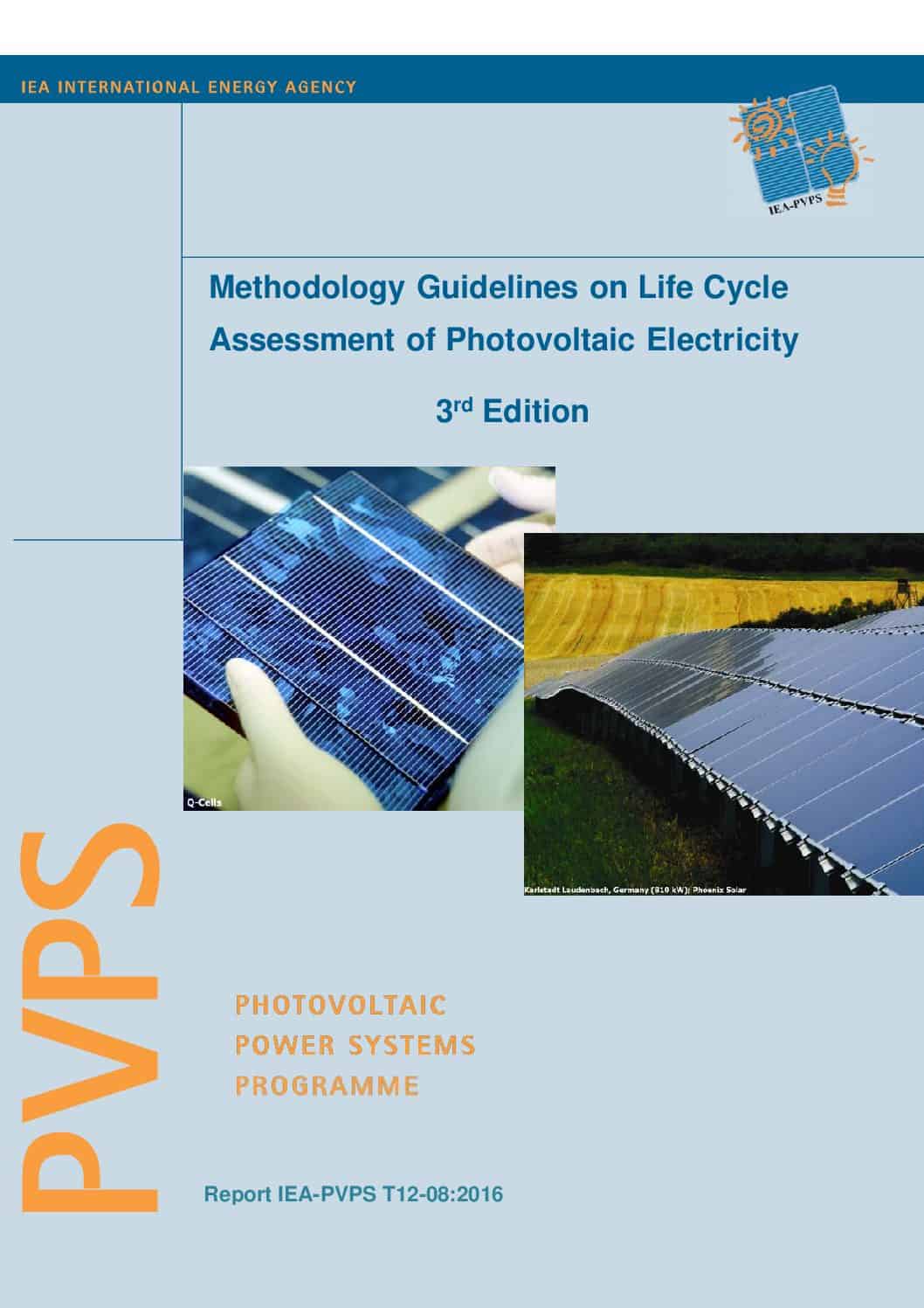Life Cycle Assessment (LCA) is a structured, comprehensive method of quantifying material and energy flows and their associated emissions caused in the life cycle1 of goods and services. The ISO 14040 and 14044 standards provide the framework for LCA. However, this framework leaves the individual practitioner with a range of choices that can affect the results—and thus the conclusions—of an LCA study. The current IEA guidelines were developed to provide guidance on assuring consistency, balance, and quality to enhance the credibility and reliability of the results from LCAs on photovoltaic (PV) electricity generation systems. The guidelines represent a consensus among the authors— PV LCA experts in North America, Europe, and Asia—for assumptions made on PV performance, decisions on process input and emissions allocation, methods of analysis, and reporting of the results.
Guidance is given on PV-specific parameters used as inputs in LCA and on choices and assumptions in life cycle inventory (LCI) data analysis and on implementation of modelling approaches. A consistent approach towards system modeling, the functional unit, the system boundaries, water use modeling, and the allocation aspect enhances the credibility of PV electricity LCA studies and enables balanced LCA-based comparisons of different electricity producing technologies.
The document discusses metrics like greenhouse gas emissions (GHG), cumulative energy demand (CED), acidification potential (AP), ozone depletion potential (ODP), human toxicity, ecotoxicity, and ionizing radiation. Guidance is given for the definition of the energy payback time (EPBT), the nonrenewable energy payback time (NREPBT), and the impact mitigation potentials (IMP). The indicator energy return on investment (EROI) is described in a separate International Energy Agency (IEA) PV Power Systems (PVPS) Task 12 report (Raugei et al. 2016). The guidelines on the reporting and communication of the results serve the need for producing clear, comprehensive, and transparent reports.
Transparency in reporting is of the utmost importance as parameters vary with geographical zones, and a system’s boundary conditions and modeling approach can affect the findings significantly. At a minimum, the following parameters shall be reported in captions of result figures and tables: 1). PV technology (single and multi-cristalline silicon, CdTe, CIS, micromorphous silicon); 2). Type of system (e.g., roof-top, ground-mount, fixed-tilt or tracker); 3). Module-rated efficiency and degradation rate; 4). Lifetime of PV and BOS; 5). Location of installation; 6). Annual irradiation, and 7.) Expected annual electricity production with the given orientation and inclination or 34 system’s performance ratio. Further important information that should be documented in the LCA report are:
- The time frame of data;
- The life cycle stages included;
- The place/country/region of production (manufacturing components) modeled;
- The explicit goal of the study including technical and modeling assumptions and the name of the entity commissioning the study;
- The LCA approach used if not process-based;
- The LCA software tool (e.g., Simapro, GaBi, other);
- The LCI database(s) (e.g., ecoinvent, GaBi, ELCD, Franklin, NREL, IDEA) and impact category indicators used, always including the version numbers;
- The assumptions related to the production of major input materials (e.g., solar grade silicon, aluminium (primary and/or secondary production));
- Electricity source, if known.
